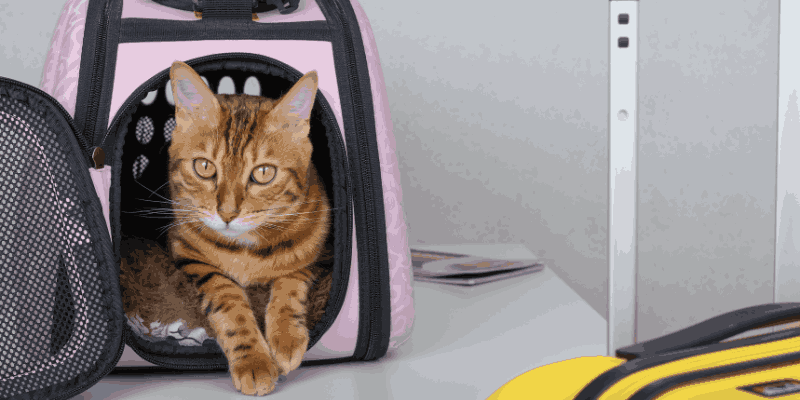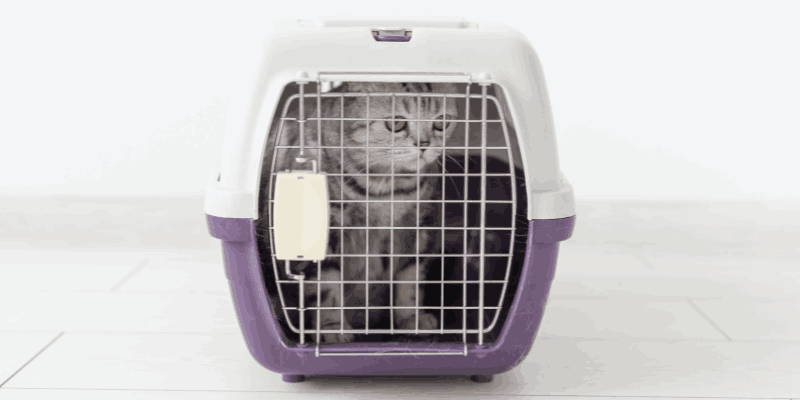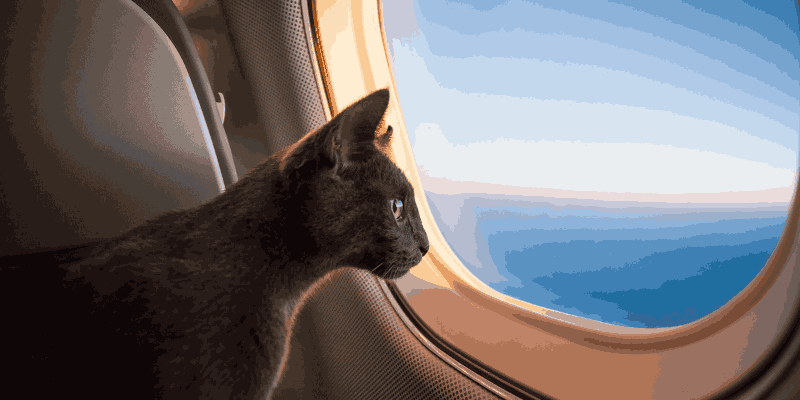- Home
- Blog
- Write for Us
- Travel Shop
- Type of TripsSolo Female TravelGirls Trip DestinationsAdventureBudget TravelLuxury TravelSolo Female TravelGirls Trip DestinationsAdventureBudget TravelLuxury Travel
- Resources
Traveling solo is an empowering experience that offers freedom, self-discovery, and the unique opportunity to connect with like-minded individuals from around the globe. For many, the thought of leaving a feline friend behind can dampen the excitement of a solo adventure. Yet, with the proper preparation and mindset, how to travel with a cat becomes less of a question and more of an exciting itinerary point. This article is a comprehensive guide for solo travelers who wish to embark on journeys with their cats, ensuring both the pet’s comfort and the owner’s convenience.
Table of Contents
Before setting off on your solo trip, it’s crucial to consider if your cat is suited for travel. Many cats can adapt to car travel or even a boat trip, but understanding your cat’s temperament is the first step. For solo travelers, the flexibility to adjust plans based on your cat’s comfort can turn a stressful situation into an enjoyable road trip.

Let’s face it: planning is not the most fun part of travel. But luckily, nowadays, there are a bunch of AI tools that can do the heavy lifting for you. You can plan through these AI travel apps and make calculative decisions for the perfect experience.
Solo travel demands thorough preparation, especially when accompanied by pets. Remember, you have to take care of your health and your cats. A visit to the veterinarian is so important to ensure that your cat is up-to-date on vaccinations and has a health certificate if needed. This step is non-negotiable for those planning to fly or cross international borders.
Even the most cautious travelers can face the unexpected. Ensuring your cat has a collar with updated contact information and a microchip can provide peace of mind during your adventures.
Packaging for two involves careful consideration, from cleaning supplies to your cat’s favorite treats. Research is your best friend here, allowing you to prepare for every eventuality, from extended car rides to finding pet-friendly private rooms.
A comfortable carrier is vital, especially for solo travelers who manage their luggage and pets simultaneously. Test different pages to find one that suits your trip type, whether a road trip or a flight.

Car travel offers freedom to solo travelers, making it easier to take breaks and explore new destinations at your own pace. If possible, ensure your cat is comfortable with short car trips from an early age, gradually increasing the duration.
Flying with a cat requires additional research to understand airline policies. Booking direct flights and preparing your cat’s carrier with familiar items can make the experience less stressful.

Exploring other options like trains, buses, or boats opens up new adventures. Each mode of transport has its own set of rules for traveling with pets, so contacting them ahead of time is crucial.
Solo travel often means staying in private rooms or hostels. Research pet-friendly accommodations to ensure you and your feline friend have a comfortable place to stay.
When you reach your ideal destination, keeping your cat safe in a new environment is paramount. Solo travelers benefit from flexible schedules that allow them to avoid crowds and choose sightseeing tours during less busy times.
Solo travel means joining group tours or even swinging a golf club. Opt for pet-friendly activities where your cat can safely explore in a harness or portable enclosure.

Kayaking with a cat can transform an ordinary paddle into an unforgettable adventure. Ensuring your cat is comfortable with water and has a life vest for safety is vital. This activity strengthens your bond while giving your cat a new perspective on nature from a secure, floating vantage point.
Traveling solo with a cat means being attuned to their needs. Recognize signs of stress and have calming aids ready. Familiar items from home can help soothe anxiety.
Maintain a routine as much as possible to provide stability for your cat. Regular feeding times and play sessions can make even the most exotic locations feel like home.
Having a first-aid kit and knowing the location of the nearest veterinarian are crucial travel tips for any solo trip. Preparation can transform potential disasters into minor hiccups.
After your adventure, easing back into your usual routine is essential for you and your cat. Watch for any signs of stress, and give your cat time to readjust.
Traveling solo with your cat is an enriching experience that can deepen your bond. With these best tips, solo travelers can embark on trips worldwide, confident in their ability to care for their feline friends while exploring new destinations. Remember, adventure awaits, and with some preparation, you and your cat can enjoy beautiful scenery, make new friends, and have the time of your lives year-round. And as always, never forget to Travel Till You Drop!
How do I prepare my cat for a long car trip?
The first thing to do is ensure your cat is comfortable with its carrier. Start with short rides around your neighborhood and gradually increase the duration. Familiarize your cat with the car’s environment by letting them explore the vehicle while it’s stationary. Pack essentials like water, food, treats, and a portable litter box to make your pet’s ride as comfortable as possible.
Can I bring my cat on solo travel tours?
You can bring your cat on solo travel tours, but thorough research is required to find pet-friendly tours. Look for terms that accommodate pets or are specifically designed for travelers with animals. Always ensure your cat has a secure and comfortable carrier, and consider their comfort zone when selecting activities.
What are the best tips for flying with a cat?
When flying with a cat, the best tips include booking a direct flight for comfort and ensuring your cat’s carrier meets airline specifications. Acclimate your cat to the page well before your trip. On the day of the flight, arrive early at the airport to give yourself and your cat plenty of time to relax and go through security.
How can I help my cat make new friends while traveling?
To help your cat make new friends while traveling, start by ensuring they’re comfortable and secure in new environments. Slow introductions to fellow travelers or pets in pet-friendly accommodations can be a good start. Always supervise interactions and consider your cat’s personality and preferences to ensure positive experiences.
What should I do if my cat gets stressed during a road trip?
If your cat gets stressed during a road trip, create a calm environment by keeping the car quiet and at a comfortable temperature. Offer them their favorite blanket or toy for comfort. Take regular breaks to use the litter box and allow your cat to stretch. If your cat has severe anxiety, consult your veterinarian about safe travel aids before your trip.
Author Bio: Fahim Joharder

Fahim is a dedicated software and AI specialist whose professional expertise matches his passion for travel, kayaking, and golf. Beyond technology and outdoor adventures, he highly values family time, constantly seeking ways to strengthen the bonds with his wife and children. His multifaceted interests make him a dynamic individual and inspire his work, allowing him to bring a unique perspective to the technology field. With a firm belief in the importance of work-life balance, Fahim embodies the spirit of a modern professional who excels in his career while fully embracing the joys of family life and personal hobbies.


Hi, Jill Here
Hi! I’m Jill, a Dallas, Texas girl traveling the world. After a career in the Air Force and touring over 50 countries later, my need to explore keeps going! It’s time to rock & roll and find all those places I never knew I was missing.
Table of Contents
Join me to get exclusive travel tips, giveaways and more!
Gallery
Copyright © 2023 | All Right Reserved